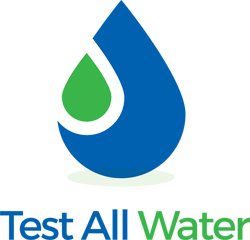Here is how you would test for the different types of chlorine with DPD 1 & 3 Tablets( Free and Combined Chlorine) in water.
Free Available Chlorine
The DPD No. 1 tablet, which contains the NN Diethyl p Phenylene Diamine Sulphate, gives a colour which is specific for free chlorine, and this colour is measured either colorimetrically or photometrically:
A clean test cell is rinsed with the water to be tested and is left empty.
A DPD No. 1 tablet is added and crushed with a clean stirring rod. The water sample is then added, and the cell is filled to the 10 ml mark.
The solution is mixed well with the stirring rod until the tablet has completely dissolved. The lid is put on the cell.
The colour must then be measured immediately to determine the free chlorine content of the water in mg/l (ppm)
Combined Chlorine (Chloramines)
This is the general name given to the derivatives of chlorine which are produced when free chlorine reacts with nitrogen compounds like ammonia and urea from bathers.
These are the products of the chlorine reactions which are responsible for most of the complaints from bathers of skin and eye irritation.
Trichloramine, more commonly called nitrogen trichloride, produced in the last reaction, is an unstable compound and being volatile comes off the surface of a pool as a gas with a nauseous odour. In addition, it is an extremely severe eye irritant. The chemical reaction does not proceed to completion at pH values above 5 so usually only very small amounts, if any are produced.
The two chloramines we are most concerned with are monochloramine and dichloramine. In the DPD test they are usually determined together using the
DPD No.3 tablet:
The cell containing the dissolved DPD No.1 tablet – from the free chlorine test – is removed from the instrument and a DPD No. 3 tablet is added to it and mixed to dissolve with the stirring rod. The cell can stand for 2 minutes for complete reaction of the combined chlorine (monochloramine and dichloramine).
The cell is then replaced in the instrument and the colour is measured again. The result is total chlorine in mg/l.
To obtain the result for combined chlorine apply the following equation:
Combined Chlorine = Total Chlorine - Free Chlorine
To get your DPD 1 & 3 Tablets click on the links below, which will show our full range of DPD no.1 & No.3 tablets
Source: Lovibond Pool and Spa Handbook- Water Treatment and Analysis.

